A sua mensagem foi enviada.
Processaremos o seu pedido e contactá-lo-emos logo que possível.
O formulário foi enviado com sucesso.
Encontrará mais informações na sua caixa de correio.
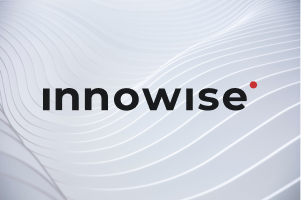
Selecionar a língua
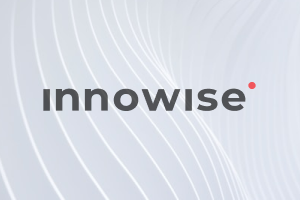
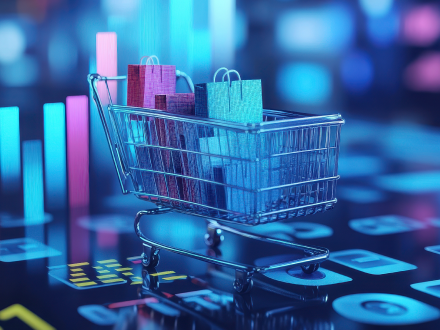
Segundo a Deloitte, prevê-se que as despesas com bens duradouros continuem a aumentar, atingindo 4.7% enquanto as despesas globais dos consumidores crescerão 3,1%. Estes números resultam do regresso da inflação aos níveis normais, de um mercado de trabalho estável e das reduções previstas das taxas de juro, que contribuirão para aumentar as despesas de consumo.
No entanto, os desafios persistem. 35% de comerciantes dizem que a má qualidade dos dados impede uma segmentação precisa. Eu diria que não é de admirar. Quando os dados dos compradores estão dispersos pelos canais, ninguém consegue ter uma visão clara. Tudo o que é preciso é uma abordagem baseada em BI para reunir tudo. Neste blogue, gostaria de explicar como pode estar entre as empresas líderes que vêem o potencial de BI no retalho e beneficiar com isso.
"Pensar em inteligência comercial para o retalho como o seu estratega silencioso que o ajuda a compreender o que realmente se passa na sua loja: o que está a vender rapidamente, quando o tráfego de pedestres atinge o pico, quais os membros da equipa que estão a brilhar e onde os lucros podem estar a diminuir. Todos os dias, vejo como o BI extrai dados dos seus sistemas e os transforma em gráficos claros, relatórios e conclusões que pode utilizar para fazer movimentos mais inteligentes."

Gestor de entregas no comércio eletrónico
Em termos simples, o business intelligence (BI) é um conjunto de ferramentas, sistemas e práticas que ajudam as empresas a compreender o que está realmente a acontecer na sua empresa - desde o desempenho das vendas ao comportamento dos clientes, dos níveis de inventário ao sucesso do marketing, e tudo o resto.
Porque é que vale a pena utilizar inteligência comercial para o retalho? Quer saber qual o canal que atrai os compradores de maior valor? O BI pode mostrar isso. Está a tentar identificar os comportamentos na loja que se correlacionam com as compras online? O BI pode revelar esses padrões. Necessita de saber quais as campanhas que se repercutem nos compradores mobile-first versus os que navegam na loja? O BI revela isso com clareza.
A Business Intelligence no sector do retalho permite-lhe ir além das suposições. Dá-lhes a confiança necessária para lançar campanhas de marketing mais inteligentes, proporcionar experiências personalizadas e afinar estratégias em tempo real.
O BI não é apenas um único painel de controlo estático. É mais como uma coleção de informação que reflecte tudo sobre o seu negócio. Reúne dados sobre as vendas, os níveis de stock e as actividades dos clientes, para que possa compreender tudo, analisá-lo e tomar decisões com precisão quando é mais importante. Eis os principais componentes do BI no sector do retalho que podem ajudar a sua empresa a funcionar de forma mais inteligente e eficaz.
Os retalhistas estão a nadar em dados! Recolhem dados de várias fontes, tais como transacções de vendas, dados de clientes, dados de inventário, etc. Até mesmo dados de terceiros, como informações de fornecedores ou feeds meteorológicos, podem desempenhar um papel importante. Como é que se pode fazer a triagem de tudo isso? Manualmente? Nem pensar.
As ferramentas AWS Glue, Azure Data Factory e GCP Dataproc reúnem dados de todo o seu ecossistema de retalho: Sistemas POS, lojas online, ferramentas de inventário e aplicações de clientes. Estes dados são centralizados no armazenamento em nuvem, como o AWS S3 ou o Azure Blob, limpos e transformados para estarem prontos para análise. A partir daí, são entregues a armazéns de dados como o Snowflake, o BigQuery ou o Redshift, onde as ferramentas de BI podem transformá-los em informações precisas e acionáveis para otimizar o inventário, aumentar as vendas e tomar decisões comerciais razoáveis.
Os números em bruto numa folha de cálculo não são muito úteis para ninguém. Mas quando se ligam esses dados a uma ferramenta de BI - isso é quando começa a contar-nos uma história. A maioria dos retalhistas utiliza ferramentas como Tableau, Power BI, ou Looker para obter uma visão clara dos seus dados e KPIs7.
Eis como funciona normalmente:
Necessita de analisar as receitas totais e as receitas por categoria de produto, por loja ou mesmo por dia? Basta clicar. Pretende filtrar por região, campanha ou segmento de clientes? É isso mesmo. Esta é a melhor parte, na minha opinião.
A análise preditiva combina uma grande quantidade de informações históricas, modelos estatísticos e aprendizagem automática para responder a uma grande questão: O que é que vai acontecer a seguir?
Começa por alimentar o sistema com uma grande variedade de dados, como padrões de vendas anteriores, tendências de sazonalidade, comportamento dos clientes e factores externos como o clima, feriados ou mesmo eventos locais. Em seguida, a plataforma de BI analisa esses dados através de algoritmos, muitas vezes integrados em ferramentas como SAS, IBM SPSS, ou Azure Aprendizagem automática. Estes modelos detectam padrões que passariam despercebidos aos humanos e geram previsões que o ajudam a planear com antecedência.
No que diz respeito aos retalhistas, muitas plataformas incluem modelos de previsão pré-construídos, concebidos especificamente para este sector. Basta definir as variáveis, escolher um período de tempo e deixar o sistema fazer o resto.
A IoT é como os olhos e os ouvidos do seu espaço de retalho. Estes dispositivos recolhem constantemente dados do mundo físico e transmitem-nos diretamente para o seu sistema de BI.
Vamos ver como tudo se conjuga:
Todos estes dados em tempo real acrescentam uma camada do mundo físico aos seus conhecimentos digitais. Isto significa que, em vez de saber simplesmente o que vendeu, começa a perceber as nuances do motivo pelo qual vendeu. Foi a colocação do produto? Visibilidade nas prateleiras? Um aumento súbito no tráfego da loja? Os dados estão a enviar sinais, e tudo o que precisa de fazer é prestar atenção.
Dois pesadelos clássicos relacionados com os stocks no comércio retalhista são o excesso de existências e as rupturas de stock. Excesso de stock empata o dinheiro, consome espaço e, muitas vezes, leva a reduções de preços ou a desperdícios, uma vez que as prateleiras (e as salas das traseiras) estão cheias, mas os produtos não se movimentam. Quando os bestsellers desaparecem no momento em que a procura atinge o pico, isso causa rupturas de stock com vendas perdidas e clientes frustrados.
O sistema de BI acompanha todas as vendas, devoluções, reabastecimentos ou transferências e permite-lhe analisar os níveis de stock juntamente com as tendências de vendas, padrões sazonais e comportamento dos clientes para gerir o inventário de forma inteligente.
Funciona da seguinte forma:
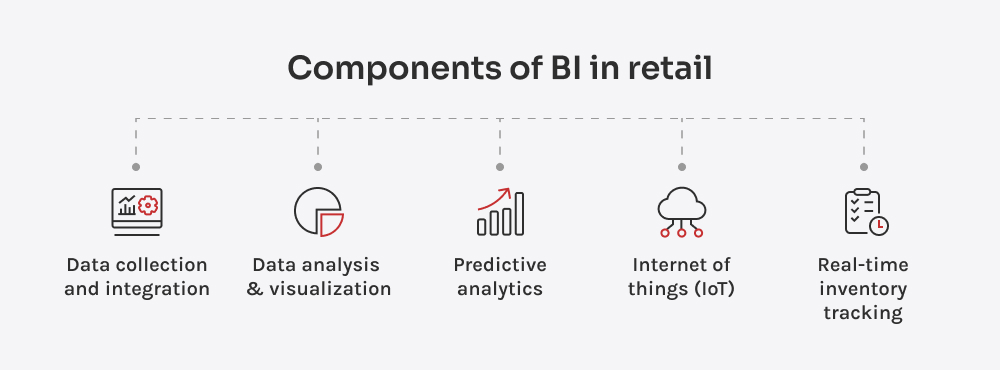
A minha experiência mostra-me como a inteligência comercial altera drasticamente a forma como os retalhistas operam, desde as decisões do dia a dia até à estratégia a longo prazo. A seguir, gostaria de partilhar uma perspetiva mais realista sobre o impacto que pode ter na sua empresa.
Nos meus anos de trabalho no retalho, testemunhei o caos que resulta de não ter uma visão clara do inventário. Roturas de stock? É um pesadelo. Excesso de stock? Também é um grande problema, especialmente com produtos perecíveis ou artigos sazonais. Business intelligence no retalho resolve esta questão, permitindo-lhe ter uma visão actualizada dos seus níveis de inventário sem verificações manuais. Prevê a procura com base em dados históricos para que possa planear com antecedência.
Constatei que a BI proporciona uma compreensão mais profunda dos clientes do que os métodos tradicionais podem oferecer. Os retalhistas têm frequentemente dados como o histórico de vendas, dados demográficos, etc., mas o BI consolida essa informação e apresenta padrões claros. Não se trata apenas de saber quem está a comprar; trata-se de compreender porquê e como que compram. Este conhecimento permite abordagens direcionadas que vão ao encontro das necessidades dos clientes a um nível muito mais pessoal e que os fazem voltar para mais.
Compreender quais as promoções que funcionaram, quais os produtos que tiveram as melhores margens ou quais os segmentos de clientes que responderam bem a campanhas específicas é onde o BI realmente ajuda. Com esta informação, pode ajustar os preços de forma inteligente, identificar os produtos mais vendidos para manter a sua disponibilidade e efetuar promoções que vão ao encontro dos interesses dos clientes.
Trabalhei com um retalhista de moda de média dimensão que fez uma campanha de descontos sazonais em várias linhas de produtos, pensando que isso iria aumentar o volume. Não foi o que aconteceu. Algumas lojas mal movimentaram o stock e as margens de lucro foram afectadas.
Uma vez implementadas as ferramentas de BI, obtiveram uma imagem mais clara: o vestuário exterior estava a vender melhor nas zonas suburbanas durante o início do outono, enquanto as lojas urbanas estavam a mudar para artigos de menor valor, como cachecóis e malas. Ajustaram a promoção seguinte em conformidade - unidades de manutenção de stock específicas, um timing mais inteligente e remarcações mais direcionadas. Não se tratava de magia, apenas de melhores decisões baseadas em números reais. E evitou que repetissem o mesmo erro dispendioso.
O BI permite-lhe ver onde o inventário se está a acumular ou onde as entregas o estão a atrasar, para que possa resolver os problemas em movimento. Assim, é possível planear os horários do pessoal com base no tráfego real, para que não haja excesso ou falta de pessoal. Também torna mais fácil concentrar o seu tempo, pessoal e orçamento nas áreas que 100% trazem resultados.
As integrações estão longe de ser apenas despesas extra. Ajudam-no a tomar melhores decisões, a poupar tempo e a aumentar os lucros. E para que isso aconteça, estas integrações fundamentais dar-lhe-ão uma visão precisa e de 360 graus da sua empresa.
Vender em linha sem integrar a sua plataforma de comércio eletrónico é como voar às cegas. As encomendas, os dados dos clientes e as tendências específicas do canal permanecem dispersos. No entanto, tudo funciona de forma diferente quando associa plataformas como a Shopify ou a Magento ao seu BI.
Como? Finalmente, verá quais os produtos, públicos e campanhas que realmente fazem a diferença. Verá as taxas de carrinhos abandonados, as SKUs mais vendidas, as taxas de conversão e números muito mais significativos - tudo num só lugar.
De acordo com a minha experiência, os retalhistas que integram o comércio eletrónico numa fase inicial constroem uma estratégia omnicanal muito mais eficaz. Os que não o fazem acabam por ficar sobrecarregados a tentar juntar os relatórios manualmente.
Os clientes dizem-nos exatamente o que precisam. O principal é saber onde ouvir. A maioria das marcas deixa que os seus dados de serviço (Zendesk, Freshdesk) funcionem num vácuo.
Uma marca de moda de média dimensão, para a qual prestei consultoria em tempos, descobriu que as queixas de atrasos nos envios aumentavam logo após as promoções sazonais. Quando a equipa fundiu os dados do serviço de apoio ao cliente do Zendesk com a plataforma de BI, acompanhou os padrões de reclamação em função dos períodos promocionais. A análise revelou que o pico de encomendas durante as promoções sazonais ultrapassava a previsão pré-promocional. Por outras palavras, a procura não estava a ser prevista com exatidão e, muitas vezes, os recursos eram insuficientes para responder ao afluxo. O problema era a má previsão.
Penso que é nos dados de serviço que se escondem as receitas futuras. As equipas de serviço já recolhem feedback valioso. Só precisa de o integrar na sua estratégia global.
Pode afogar-se em excesso de stock ou perder vendas com as prateleiras vazias. Nenhum dos dois é bom. Plataformas integradas como NetSuite, Brightpearl ou ferramentas IMS personalizadas, enviam em tempo real o estado do stock, as taxas de quebra e as velocidades de rotação para o seu painel de controlo BI.
Isto permite-lhe:
Já vi em primeira mão como as empresas que conseguem este equilíbrio crescem mais depressa porque libertam dinheiro e satisfazem a procura dos clientes de forma mais consistente.
Os dados dos clientes residem frequentemente em CRMs, mas permanecem desligados da análise de BI de retalho. Tomará uma óptima decisão quando ligar CRMs como o Salesforce ou o HubSpot a sistemas de BI. Isto permite uma análise mais profunda do comportamento de compra, do valor do tempo de vida do cliente e da segmentação. O resultado são campanhas mais bem direcionadas, relações reforçadas e compras repetidas com personalização baseada em dados.
Pelo que tenho visto, os retalhistas com maior crescimento tratam os seus sistemas de ponto de venda não como caixas registadoras, mas como ciclos de feedback constantes sobre o comportamento dos clientes.
Uma cadeia de artigos para o lar partiu do princípio de que todas as lojas tinham o mesmo desempenho. Depois de integrarem os dados do PdV no seu sistema de BI, descobriram que as lojas das zonas suburbanas necessitavam de combinações de inventário totalmente diferentes das lojas das zonas urbanas. O stock localizado aumentou o tráfego pedonal e o tamanho do cesto quase de um dia para o outro. Estes excelentes resultados são mais do que reais quando se ligam os sistemas PdV às plataformas de BI.
As campanhas de marketing são muitas vezes medidas isoladamente, o que dificulta a compreensão do verdadeiro ROI ou do impacto dos esforços de marketing nos objectivos comerciais globais. Não cometa este erro. Invista de forma inteligente.
Plataformas como Mailchimp, Klaviyo ou ferramentas personalizadas no seu ecossistema de BI revele o percurso completo do cliente e ligue o desempenho da campanha às receitas reais, às taxas de retenção e ao valor do tempo de vida - e não apenas aos cliques ou às aberturas.
Na minha opinião, os dados de abastecimento merecem a mesma atenção que os dados dos clientes, especialmente depois do que vimos durante os colapsos da cadeia de abastecimento provocados pela pandemia. Plataformas como SAP Ariba, Coupa, ou mesmo portais de fornecedores simples e personalizados, quando integrados no BI, mostram os prazos de entrega dos fornecedores, as taxas de defeitos e o cumprimento dos contratos em tempo real.
O acompanhamento tradicional do inventário é reativo. Só se sabe que um produto está em rutura de stock quando isso já está a prejudicar as vendas. As prateleiras inteligentes IoT invertem esta situação. Detectam os níveis de stock em tempo real na própria prateleira e não apenas no sistema de armazém.
As estantes inteligentes estão equipadas com sensores. Quando falamos de "sensores" nas prateleiras inteligentes, referimo-nos normalmente a três tipos principais:
Pequenas células de carga ou tapetes de pressão incorporados na prateleira detectam a quantidade de peso que está sobre ela. Quando alguém pega num produto, o peso desce ligeiramente - e o sistema regista-o.
As prateleiras equipadas com antenas RFID podem detetar quando os artigos etiquetados são adicionados, movidos ou removidos. Cada produto com uma etiqueta RFID envia um pequeno sinal sem fios, pelo que a prateleira sabe exatamente quais os artigos que estão presentes.
Pequenas câmaras monitorizam visualmente o espaço das prateleiras e modelos de IA identificam produtos, lacunas e interações com os clientes. Pode literalmente seguir a frequência com que os clientes tocam num produto mas saem sem comprar.
Os dados fluem destes sensores para o seu sistema de BI através de APIs ou hubs de integração IoT. Os seus dashboards de BI podem então mostrar-lhe o seguinte:
Por exemplo, se um produto com uma margem de lucro elevada se esgota constantemente numa loja, mas fica totalmente disponível noutra, o seu sistema detecta-o antes de perder vendas ou excesso de stock.
A inteligência empresarial é excelente para ver o que aconteceu no passado, mas a análise empresarial (BA) leva isso para o nível seguinte, dizendo-lhe porque é que as coisas aconteceram e prevendo o que está para vir. A BA não se limita a mostrar tendências - decompõe os números, detecta padrões ocultos e prevê mudanças futuras.
Por isso, pode dizer-se:
Atualmente, em muitos sistemas e plataformas de retalho, a BA está integrada nas soluções de BI como a camada mais avançada (pense em análises preditivas, deteção de tendências e recomendações). Estão intimamente ligados e, no retalho, normalmente trabalham em conjunto como parte de uma estratégia de dados inteligente.
| Tipo de integração | Soluções (exemplos) | Benefícios |
| Plataformas de comércio eletrónico | Shopify, Magento | Visão unificada de produtos, audiências, campanhas; melhor estratégia omnicanal; factores de receita mais claros |
| Software de serviço ao cliente | Zendesk, Freshdesk | Associa o feedback às tendências da empresa; identifica os pontos fracos do serviço; melhora a previsão e o planeamento |
| Software de gestão de inventário | NetSuite, Brightpearl, IMS personalizado | Acompanhamento das existências em tempo real; evita o excesso de existências/excedentes; melhora o reabastecimento e o fluxo de caixa |
| Software CRM | Salesforce, HubSpot | Conhecimentos mais profundos sobre os clientes; melhor segmentação; impulsiona a repetição de compras através da personalização |
| Sistemas de ponto de venda (PdV) | Square, Lightspeed, Clover | Detecta padrões locais da loja; aumenta o tráfego pedonal e as vendas com uma atribuição de inventário mais inteligente |
| Gestão de campanhas de marketing | Mailchimp, Klaviyo, ferramentas personalizadas | Liga as campanhas às vendas e retenções reais; revela o verdadeiro ROI e não apenas os cliques |
| Software de gestão de fornecedores | SAP Ariba, Coupa, portais de fornecedores | Monitoriza o desempenho dos fornecedores; reduz os riscos; melhora a resiliência da cadeia de abastecimento |
| Prateleiras e sensores inteligentes IoT | Sistemas RFID, sensores de peso, visão por computador | Monitoriza a disponibilidade nas prateleiras; detecta antecipadamente as vendas perdidas; optimiza o espaço nas prateleiras e a rotação de stocks |
Ainda não sabe por onde começar ou como aumentar a escala? Não se preocupe - não está sozinho. O BI pode parecer muito no início, mas com a orientação correta, torna-se um ativo poderoso para o seu negócio. Aqui está um guia claro e sem complicações para o ajudar a avançar com confiança.
Antes de tocar em qualquer tecnologia, é preciso saber claramente o que se pretende alcançar. Está a tentar reduzir os custos de inventário? Ou precisa de melhorar o valor do tempo de vida do cliente? Coloco isto em primeiro lugar apenas porque, sem objectivos específicos, o BI transforma-se numa lixeira de dados com painéis bonitos e sem direção. Assim, se definir alguns objectivos vagos - digamos, "melhores conhecimentos" - não o levará a tomar decisões mais inteligentes em termos de stock, preços ou marketing. Sugiro que escolha 2-3 KPIs específicos (por exemplo, taxa de vendas e valor do tempo de vida do cliente) para se concentrar primeiro.
É provável que já tenha dados em plataformas de comércio eletrónico, sistemas de ponto de venda, ferramentas de CRM e plataformas de marketing. Agora é altura de descobrir o que está disponível - e o que falta. Mapeie todas as fontes de dados. Identifique as que pode ligar através de APIs e as que podem necessitar de extração personalizada.
A ingestão de dados refere-se à recolha de dados de todos os cantos da sua empresa: devem ser incluídos os seus CRM, ERPs, sistemas de transação e até mesmo intervenientes externos como APIs, plataformas de terceiros e fontes públicas. Em seguida, é necessário decidir como é que os seus sistemas vão comunicar entre si. Vai transmitir dados em tempo real? Processá-los diariamente? Use uma ferramenta ETL (Extrair, Transformar, Carregar). A minha dica aqui é trabalhar com um parceiro informático fiável para conceber um plano de integração simples e escalável.
Os maus dados estragam até o bom BI. Antes de visualizar qualquer coisa, é necessário normalizar as convenções de nomenclatura, tratar os campos em falta e alinhar os formatos entre sistemas. Em vez disso, crie um processo de validação de dados desde o início. Automatize o máximo de limpeza possível através de scripts ou funcionalidades de ferramentas de BI.
É preciso dizer que ninguém utilizará 20 painéis de controlo ao mesmo tempo logo após a instalação das ferramentas de BI. A sobrecarga de dados paralisa a tomada de decisões. Menos é muitas vezes mais. Conceba painéis de acordo com os seus objectivos e não apenas com o que é possível medir. Comece com um número reduzido de dados que permitam agir - pense em taxas de venda, retorno da margem bruta sobre o investimento (GMROI), crescimento do tamanho do cesto ou valor do tempo de vida do cliente.
O seu sistema de BI só é tão bom quanto as pessoas que o utilizam. A baixa adoção mata o ímpeto do BI. Todos, desde os gerentes de loja às equipas de marketing, precisam de saber como aceder e interpretar as informações. Por isso, invista corajosamente em sessões de integração, guias de referência rápida e actualizações regulares adaptadas a cada função.
O BI não é "definir e esquecer". Continue a otimizar. À medida que o seu negócio de retalho cresce, as suas necessidades de dados e objectivos evoluem. Agende check-ins regulares (recomendo que sejam trimestrais) para rever os seus painéis, adicionar novos KPIs e retirar métricas irrelevantes.
Aqui estão eles - oito passos que parecem bons no papel. Mesmo assim, parece que precisa de investir algum tempo e esforço para definir um BI que funcione a seu favor e não contra si. A minha recomendação sincera é a seguinte: se achar que é demasiado e que não tem recursos suficientes para abordar cada passo como deve ser, atribua-o a pessoas que conheçam o assunto por dentro e por fora, com os projectos realizados com sucesso e o feedback real dos clientes. A Innowise é esse tipo de parceiro - prático, experiente e focado no BI que realmente funciona.
Estou a ver inteligência comercial no retalho tem tudo a ver com saber que acções tomar e quando as tomar. A implementação de um sistema de BI no retalho pode tornar-se a sua maior alavanca de crescimento. A única coisa a fazer é fazê-lo corretamente. Defina objectivos claros, acompanhe as métricas certas, evite complicações desnecessárias e simplifique sempre que possível. Se parecer demasiado para assumir sozinho, teremos todo o gosto em conversar e ajudá-lo.

Director de Tecnologia
Dmitry lidera a estratégia tecnológica por trás das soluções personalizadas que realmente funcionam para os clientes - agora e à medida que crescem. Ele une a visão geral com a execução prática, garantindo que cada construção seja inteligente, escalável e alinhada com o negócio.





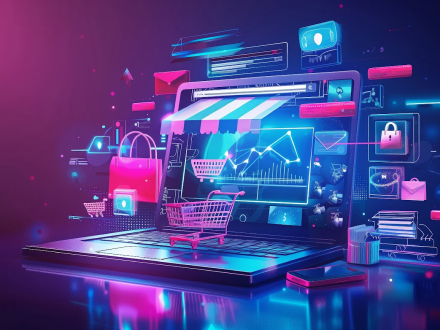



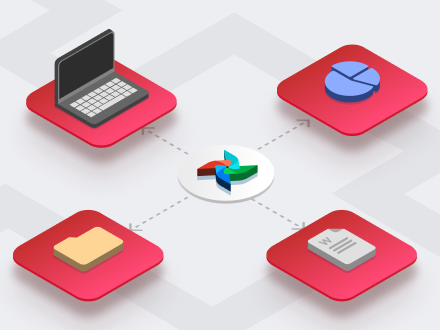


A sua mensagem foi enviada.
Processaremos o seu pedido e contactá-lo-emos logo que possível.

Ao inscrever-se, o utilizador concorda com a nossa Política de privacidadeincluindo a utilização de cookies e a transferência das suas informações pessoais.